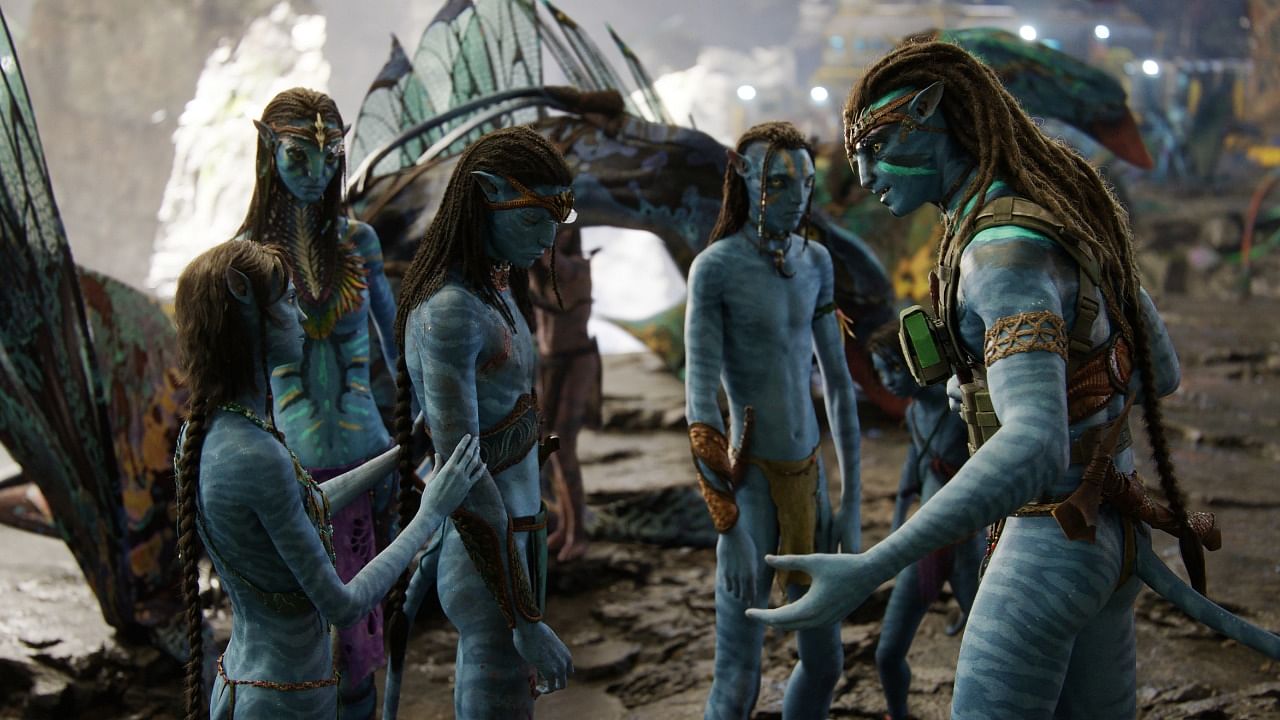
Avatar: The Way of Water
Director: James Cameron
Cast: Sam Worthington, Zoe Saldana, Sigourney Weaver, Stephen Lang
Score: 4 stars
Director James Cameron's mega space adventure Avatar is now 13 years old, and to this day, remains a visual spectacle with incredible production values...though the same cannot necessarily be said about its plot. The Way of Water, though, is at least a respectable step up from the first film, even though it broadly follows the same beats as the first one - but with its own flair.
Taking place over a decade after the first film, The Way of Water puts the main character, Jake Sully, into a similar kind of dilemma as he faced in the first film, only this time with a grander scope of having to protect his family and not merely choose a side between the humans and the indigenous Na'vi. Facing the return of Miles Quaritch, now also a Na'vi clone, Jake chooses not to fight but flee, setting off a series of events of discovery - not just for him, but his children.
There is not a lot to be said about the first film's plot, though it's entirely likely that Cameron was simply not trying to reinvent the wheel with an endeavour in visual effects that large. With The Way of Water, though, he clearly has a lot of leg space as the focus shifts away more from the wow factor of the visuals to more intimate character moments such as Jake's youngest son Lo'ak discovering - and vehemently defending - a brotherhood with a large marine animal on a shared belief of being outcasts, or the adopted daughter Kiri trying to fit into the world despite her almost extreme connection to the flora and fauna of the moon Pandora. It takes a lot of deft balancing, but the film really manages to bring together the characters in an almost memorable way after the credits roll, a large improvement from the first film - a distinction granted even to returning characters like Jake and Neytiri themselves.
And as the title of the film suggests, it also brings in a deeper philosophy about the water and the seas, where just like the real world, the people of Pandora consider it the birthplace of life and revere it and its creatures, particularly the tulkun, with whom they share a virtually familial bond. It is presented in sharp contrast to the humans, who hunt the tulkun for its anti-aeging enzyme (literally called "amrita" here) and in general, show no regard for Pandora, destroying vast swathes of it just in the process of making landfall from space.
One of the better aspects of the first Avatar was its spiritual core, Eywa, the so-called soul or Great Mother of Pandora. It gave life to the world in many meaningful ways and even served as a highly effective plot device for the third act, driving the main characters, Jake Sully and Neytiri - the other better aspect- to action. Cameron takes that element, and just like the reverence offered to water, elevates it to almost a religious level. Combining it with the idea of nature vs nurture given form literally in the characters, it feels like he is using the film to make a statement against the way humans treat the Earth (a character actually says "Earth is dying," using it as a justification for the horrors they wreak on Pandora).
But Cameron's position on the matter of planetary exploitation and climate change aside, it is not difficult to see the similarities of the way humans treat Pandoran fauna and real animals, especially in the tulkun whaling scene, which is positively revolting to witness but serves as an important moment in the film, leading directly into the third act's big action set-piece, which is also elevated to an emotional level by involving a smaller, personal stake for both Jake and Quatrich as opposed to a global danger. In whole, Cameron has, at least on some level, put a very strong emphasis on what it means to call something "cinematic" - achieving a striking balance in storytelling in the process.